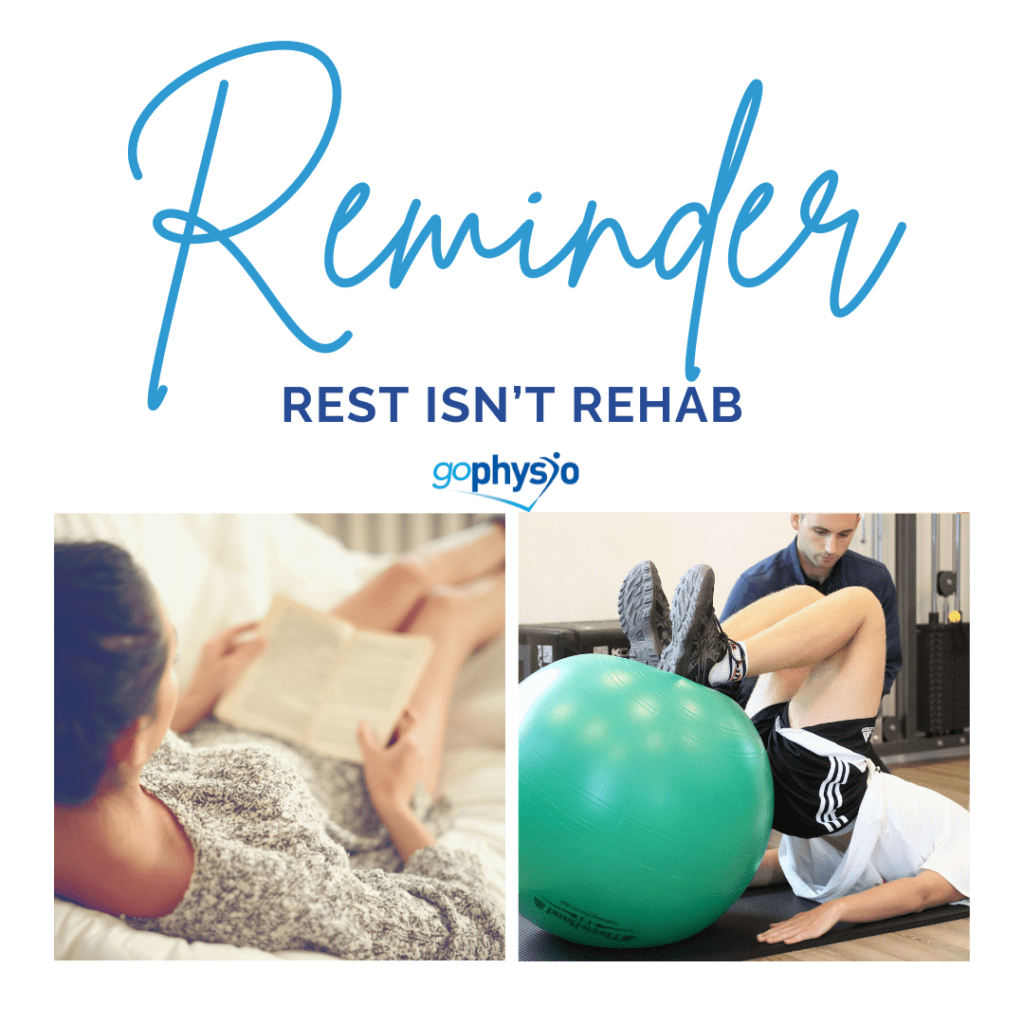Why Rest Alone Doesn’t Help an Injury: A Simple Guide
If you’ve ever been injured, you might have heard the advice to “just rest and you’ll get better.” This is often the standard line from overwhelmed GPs and ‘walk in centres’ nowadays, who just don’t have the time or resources to give any advice or meaningful guidance. While rest is important, it’s only part of the recovery journey. Here’s why rest alone isn’t enough to heal an injury and what you should do instead.
1. Healing Needs More Than Rest
When you rest, you’re giving your body a break from the activities that might have caused the injury. This is good for immediate relief from pain and swelling, but it doesn’t address the root cause. To truly heal, you need to work on restoring strength, flexibility, and function to the injured area.
2. Avoiding Muscle Weakness
Too much rest can make your muscles weaker. When you don’t use them, they start to shrink and lose strength, a process known as muscle atrophy. Strong muscles support your joints and bones, so keeping them active is key to recovery.
3. Keeping Joints Flexible
Injured joints can become stiff if they’re not moved regularly. Gentle exercises and stretches keep your joints flexible and help prevent long-term stiffness, which can delay your recovery.
4. Improving Blood Flow
Movement helps improve blood flow to the injured area, delivering the oxygen and nutrients your body needs to heal. Without movement, your recovery can be slower because your body isn’t getting what it needs to repair itself.
5. Preventing Re-injury
Rest alone doesn’t prepare your body for returning to normal activities. Without proper rehabilitation exercises, you’re more likely to get injured again. Strengthening and conditioning the injured area makes it stronger and less prone to future injuries.
6. Feeling Better Overall
Staying active, even with simple exercises, can boost your mood and keep you motivated. It’s common to feel down or frustrated when you’re injured, but participating in a rehabilitation program can give you a sense of progress and achievement.
What Should You Do?
After the initial rest period (usually a few days to a week), it’s important to start gentle rehabilitation exercises. Here’s what you can do:
- Range of Motion Exercises: Slowly move the injured area to keep it flexible.
- Strength Training: Use light weights or resistance bands to build strength.
- Balance Exercises: Work on your balance to prevent future injuries.
- Functional Activities: Gradually return to your normal activities or sports, but take it slow and listen to your body.
Why It Pays To See An Expert
A healthcare professional like a Physio or Sports & Rehabilitation Therapist can assess your injury in detail. You’ll get a personalised recovery plan that is tailored to your work, hobbies, sports and activities. You’ll not only get treatment that promotes recovery but also the right exercises to help you further.
Rest is important, especially right after an injury, but it’s not the whole story. To fully recover and get back to your regular activities, you need a combination of rest, rehabilitation, and the right exercises. By taking an active role in your recovery, you’ll heal better and faster.
Stay active, stay healthy!




